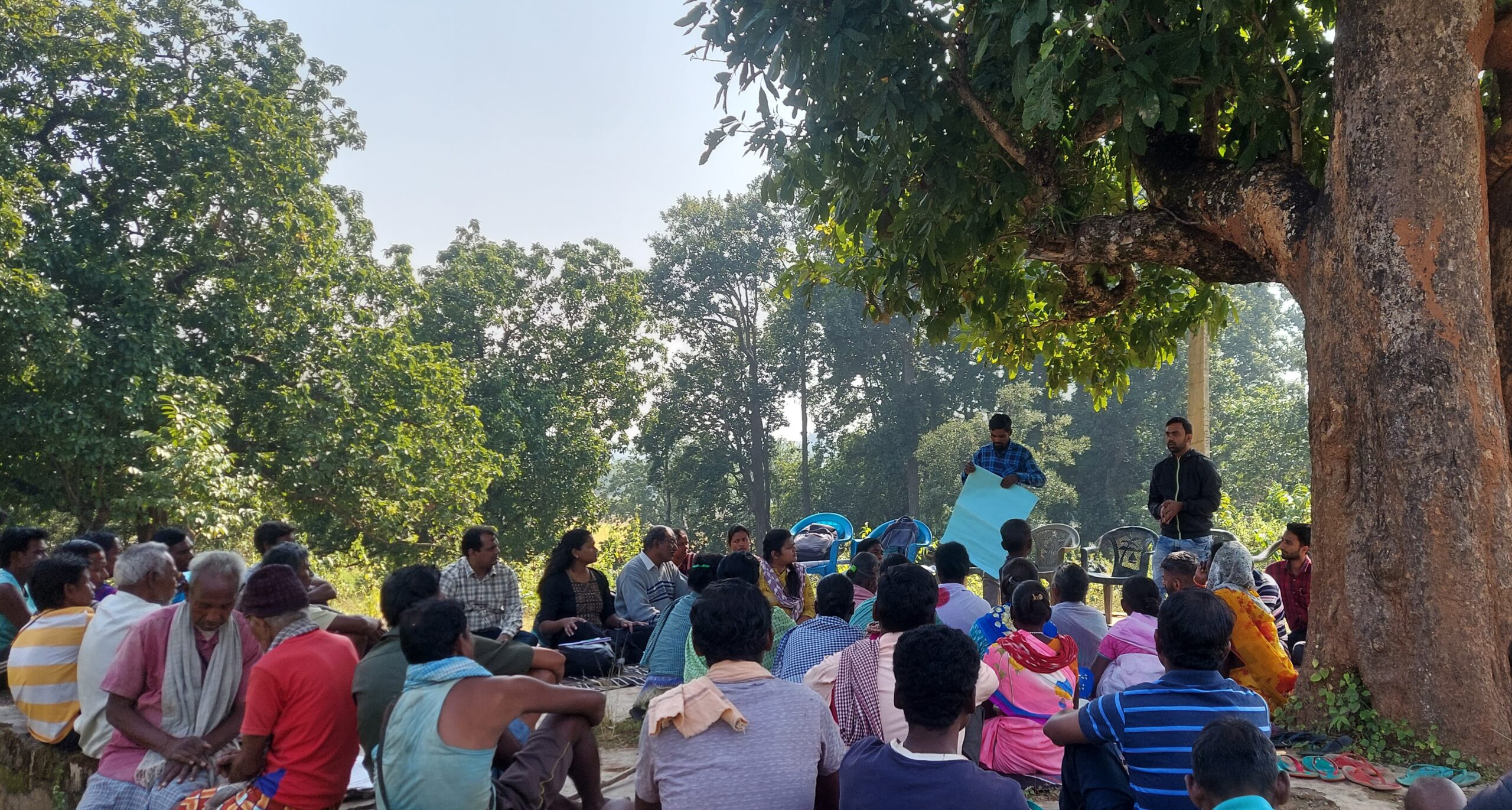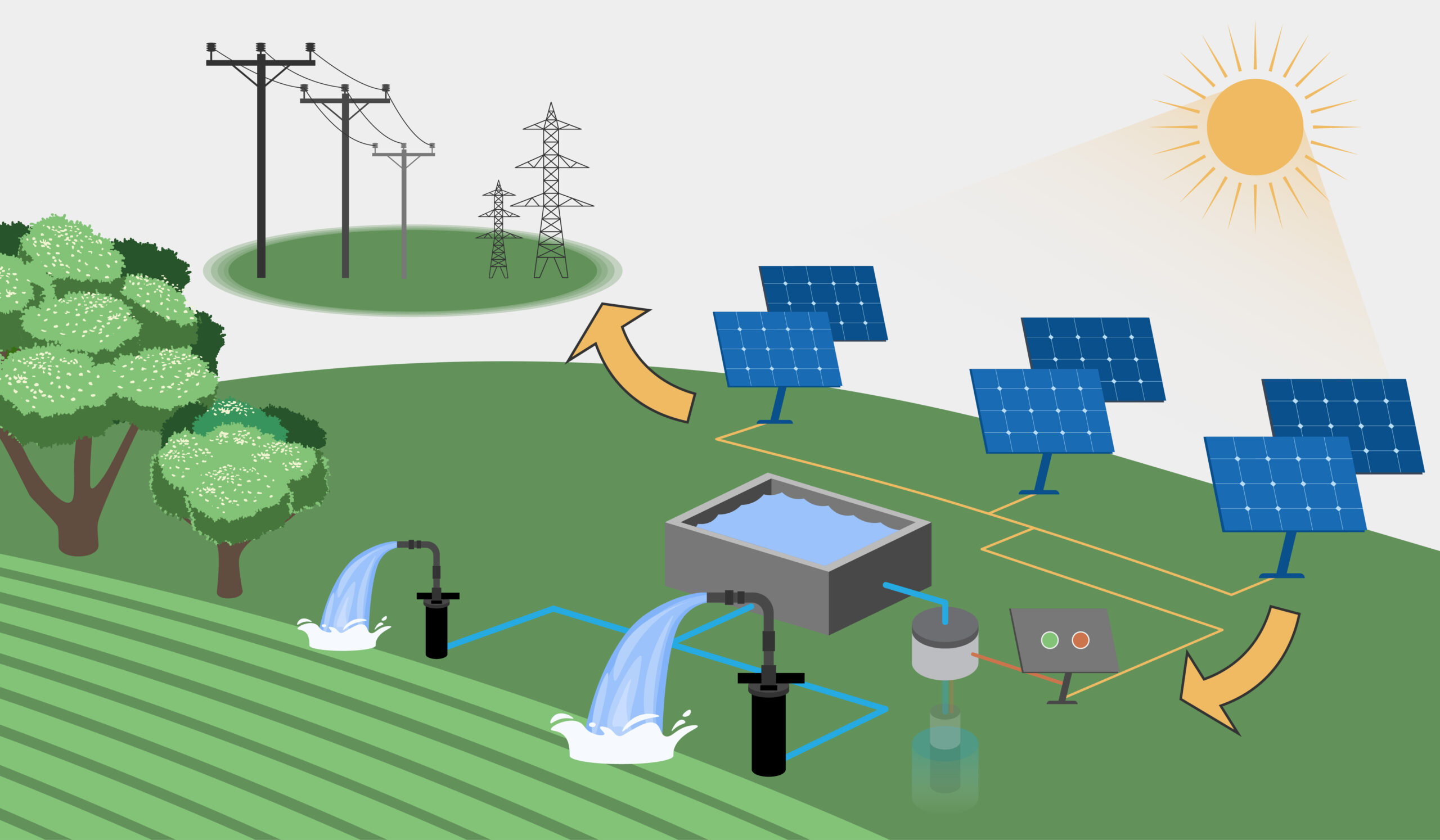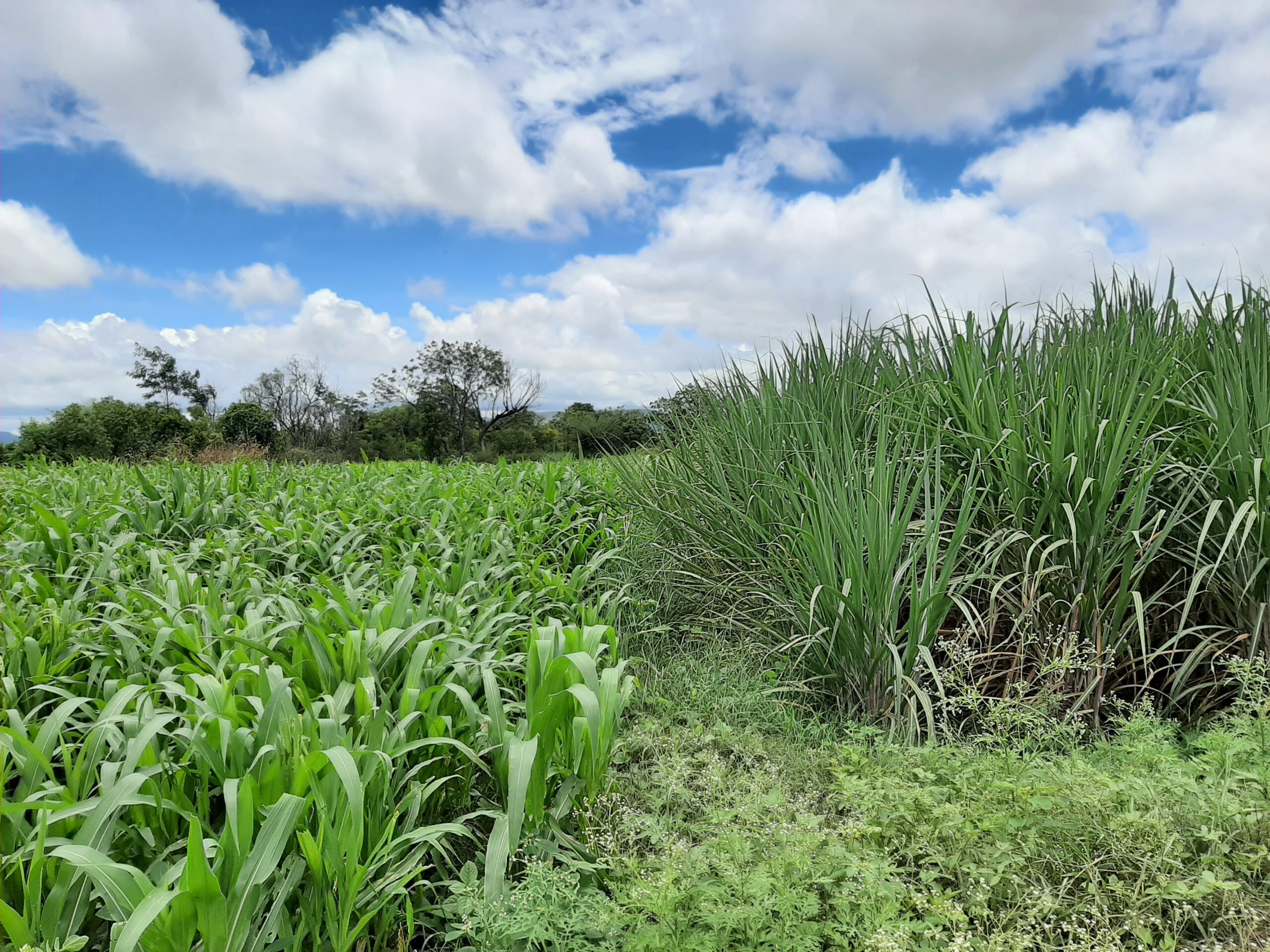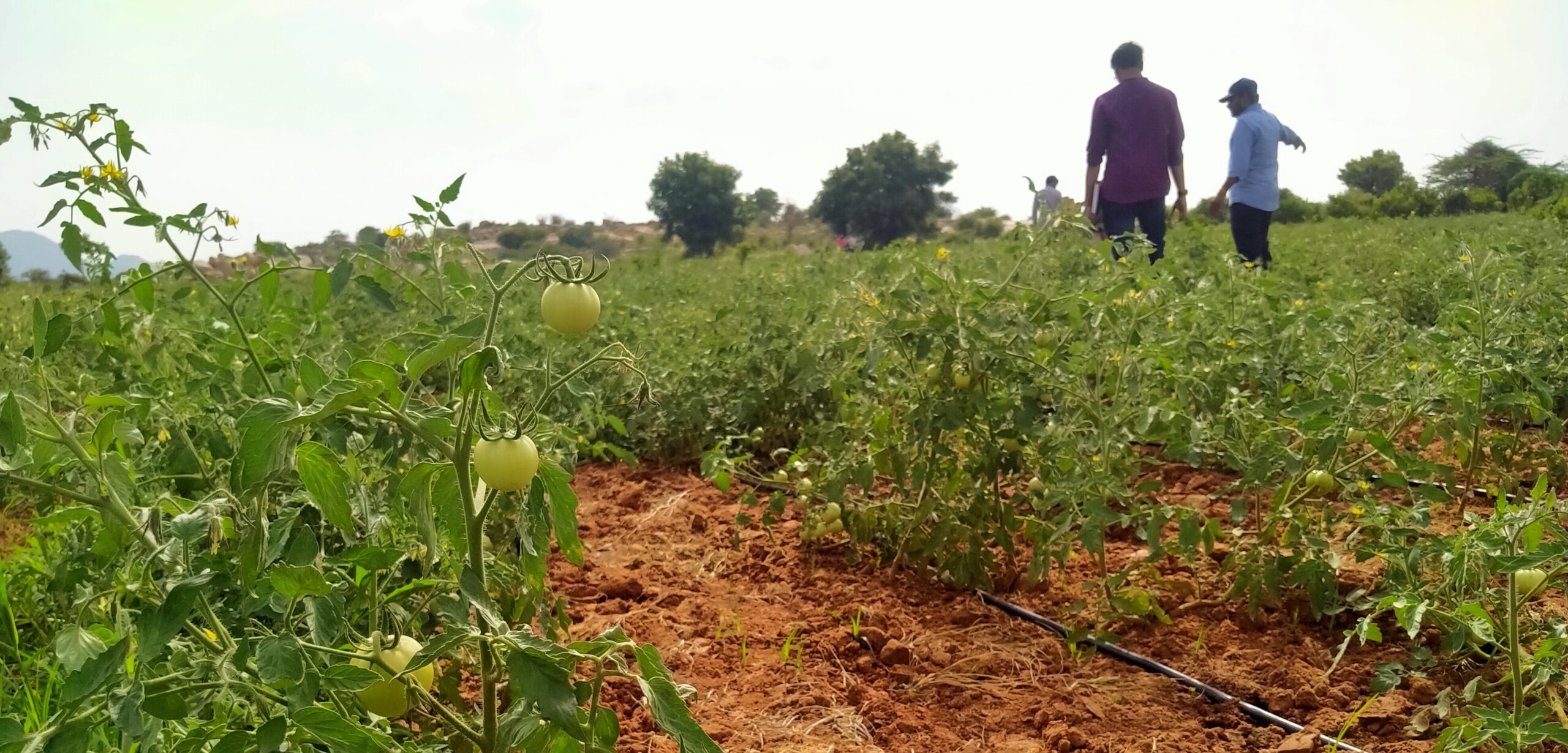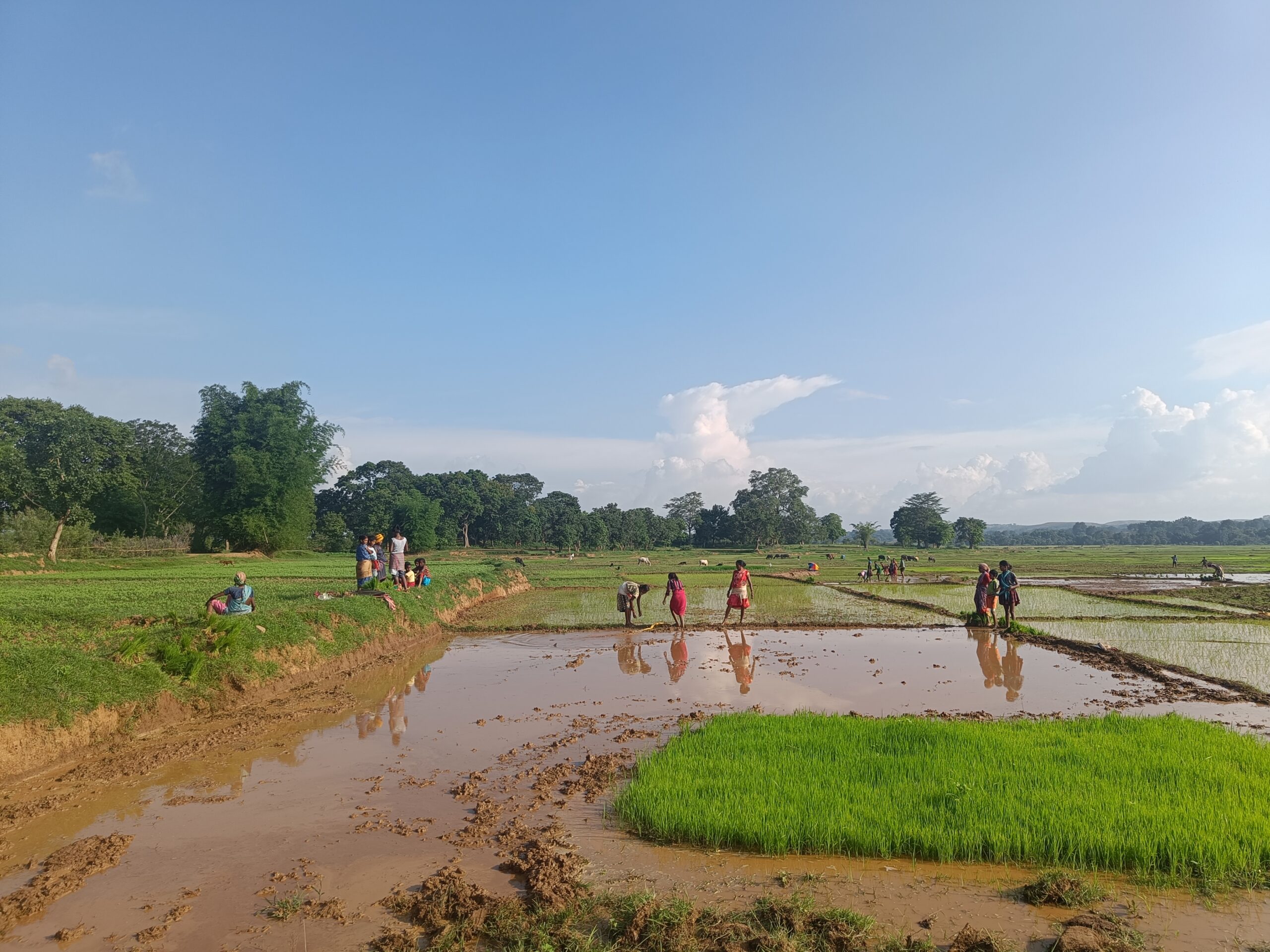Field Notes from Anantapur’s Tomato Markets
Piles of tomatoes strewn around an informal mandi near Anantapur, Andhra Pradesh. Photo by Lakshmi Pranuti Choppakatla
We were in hot and dry Anantapur in southern Andhra Pradesh, on our way to Gorantla Varipalli village for fieldwork when we caught sight of something familiar. Bright red mounds of discarded tomatoes stretched for miles on both sides of the highway — visuals we had seen on the news before, but never encountered in person.
At a time when vegetable prices are so high in cities across the country, why was so much produce getting dumped along Anantapur’s highways? Moreover, the neighbouring district of Chittoor, about 200 kilometres away, is home to Asia’s largest tomato market and yet this harvest could not be salvaged.
Another critical bit of context is that the tomato is a highly-perishable vegetable crop that relies on steady irrigation, which makes it even more important to understand why it was being farmed and then dumped in such volumes in semi-arid Anantapur. We stopped at a makeshift tomato mandi (market place) to find out more.
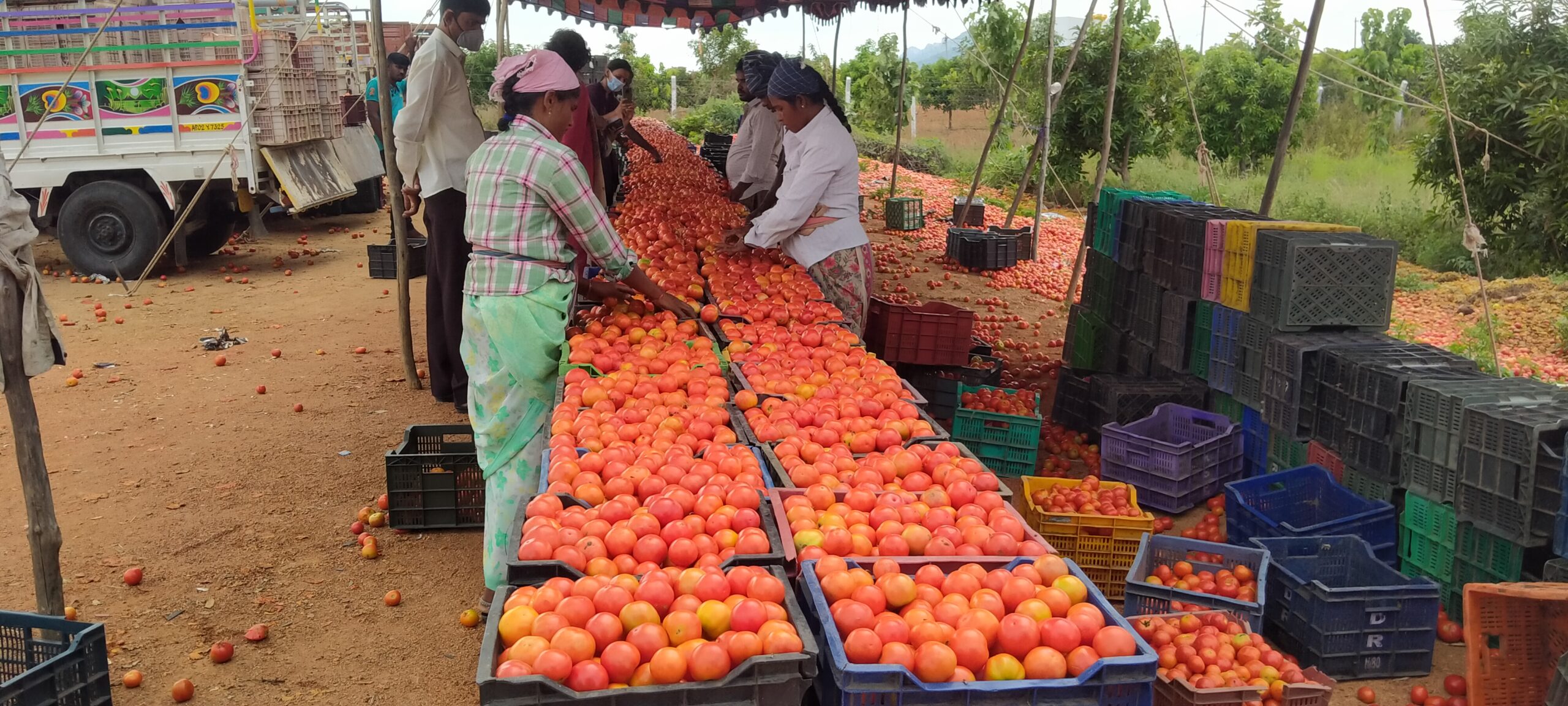
Tomatoes being sorted at an informal mandi (market) near Anantapur in Andhra Pradesh. Middlemen conduct transactions at these mandis and buy only fine grade produce, which is sent to Pondicherry, Goa and Telangana. The tomatoes that are not procured by these middlemen are discarded. Photo by Lakshmi Pranuti Choppakatla and Surabhi Singh
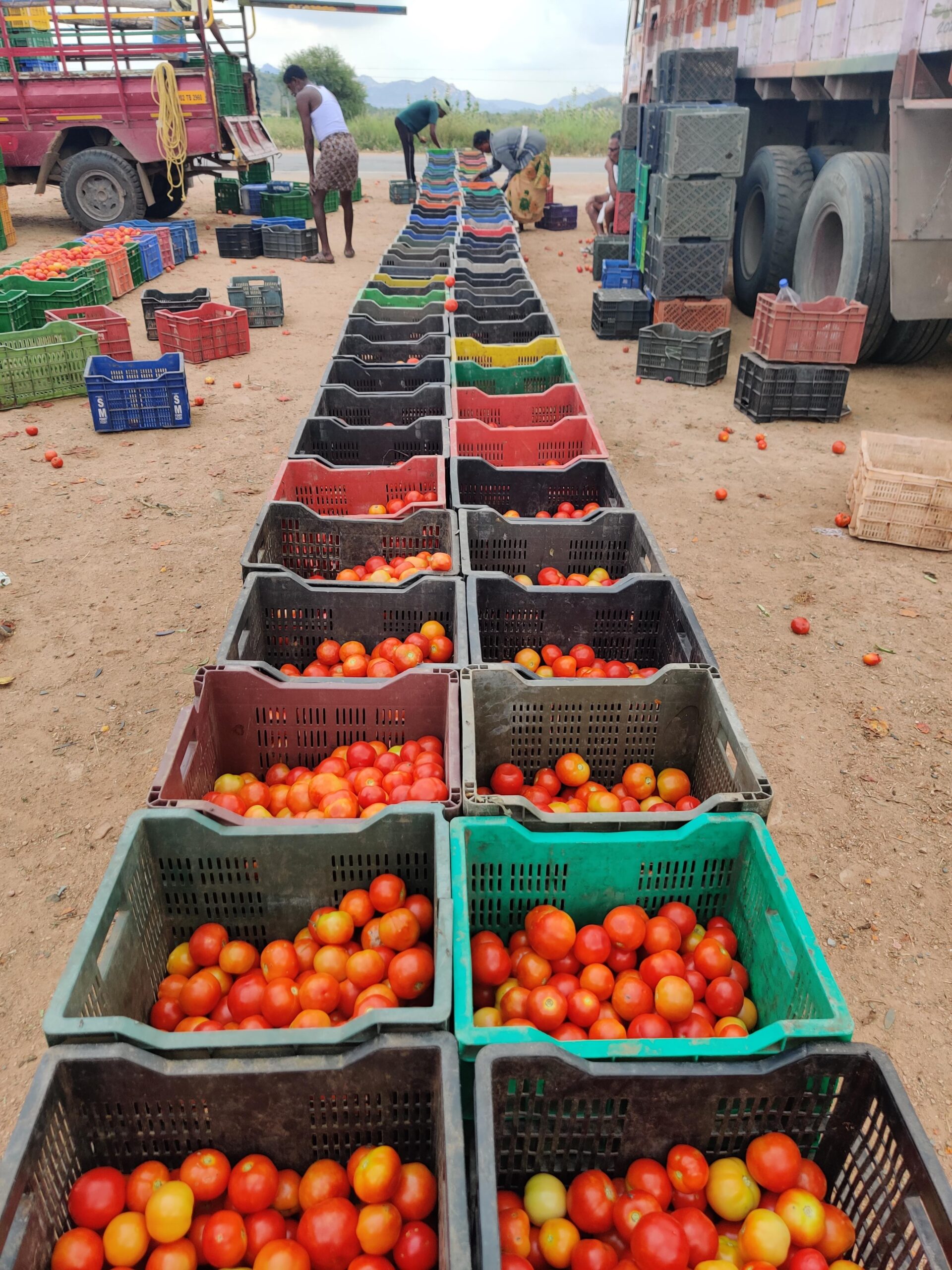
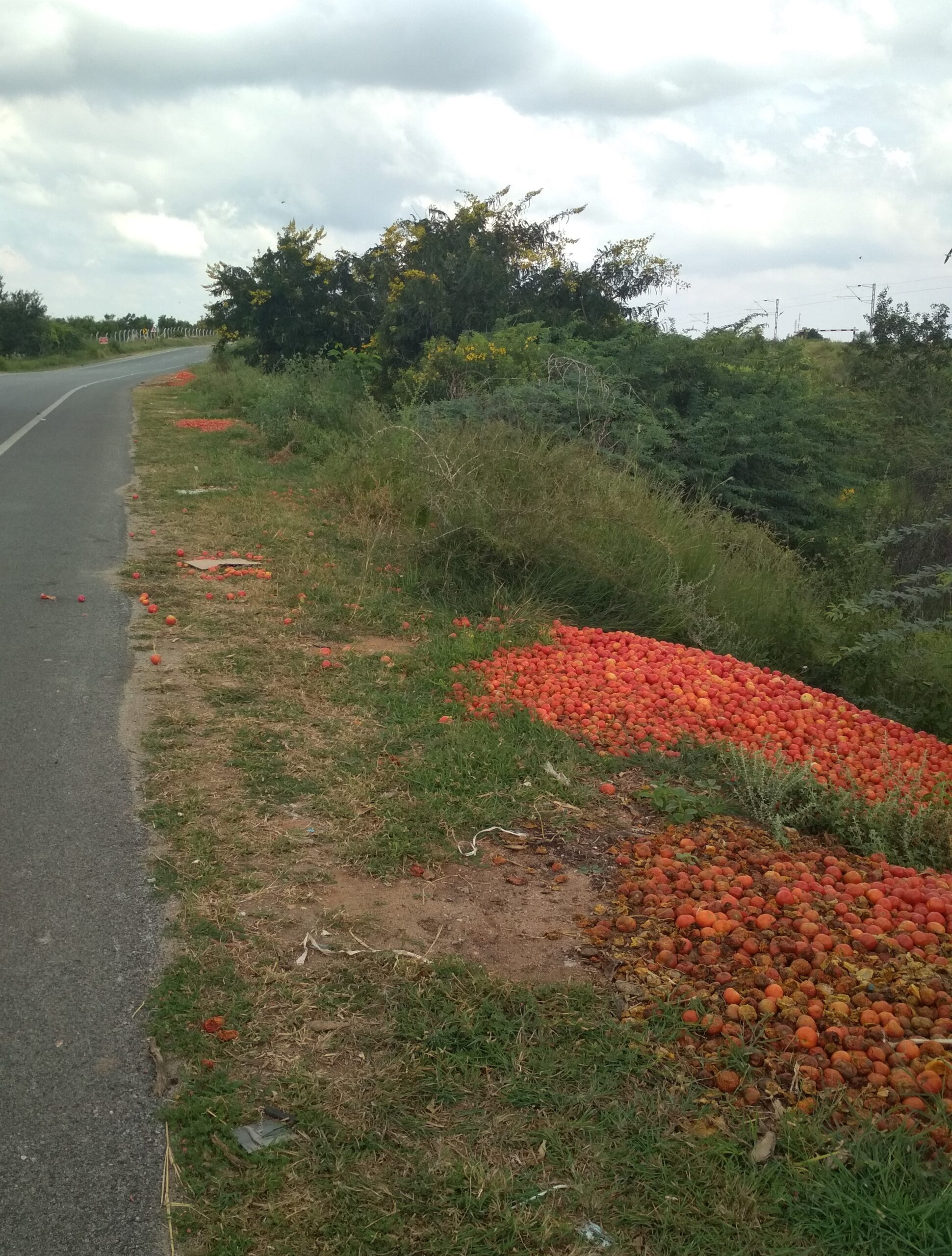
Piles of tomatoes lay discarded by a road near Anantapur, Andhra Pradesh. Photo by Lakshmi Pranuti Choppakatla
Discarding tomatoes is business as usual
This dire sight is not uncommon in the region, we were told. The mandi we stopped at was only one of five on that stretch of the highway, an informal set-up where middlemen conduct transactions and buy only fine grade produce, which is sent to Pondicherry, Goa and Telangana (these were not APMC markets, which are formal, government institutions). The slightly-damaged ‘low-grade’ ones are dumped because the market price is too low to offset the cost of transporting them to food processing units in Madanapalle (about 200 kilometres away) where they can be used to make sauces, purees, juices and other products.
On a good day, each crate (25 kg) is sold at ₹ 1,000 and on some days, it also falls to as low as ₹ 100 to ₹ 150 per crate. The tomatoes that are not procured by these middlemen are discarded. On average, if one mandi gets 700 crates (17,500 kg) of produce each day, around 100 crates (2,500 kg) are discarded.
It was particularly noteworthy to us that tomatoes are dumped almost daily in a semi-arid place like Anantapur, where 90% of the agriculture is rain-fed. That’s very high. This is a region that practices protective irrigation for rain-fed agricultural land, a form of irrigation that is carried out where there is a crisis of water scarcity. As the name suggests, it works to sustain or protect dryland crops during drought and ensure that the limited water resources reach a large section of farmers.
The remaining 10%, which includes tomatoes, is irrigated mainly by extracting groundwater through borewells. These are adverse conditions for agriculture and yet an irrigated and labour-intensive crop like tomato was being farmed, only for a bulk of it to be dumped. This wastage needs to be addressed.
Supply chains and processing units
The farmers we spoke to told us that storage facilities alone would not help them as tomatoes are perishable and that it was good market linkages and a guaranteed purchase of their produce that could help them cope with the high input and labour costs they incur. They would also benefit from a more transparent procurement system — excluding middlemen who absorb a lot of the profit.
Additionally, a secondary processing unit supplemented with capacity building measures can work towards preserving fresh tomatoes as either sun-dried tomatoes, pickles, sauces etc. Such value-added products have high market value thus enabling Anantapur’s farmers to make up the cost they put in to cultivate it and even earn a profit. This is already being practiced in the neighbouring district’s large Madanapalle tomato market where tomatoes are acquired for making juices, sauces and purees.
But this food processing option cannot be treated as a last resort. As a farmer from neighbouring Chittoor district points out here, such units normally acquire smaller, slightly-damaged varieties at throwaway prices. It is necessary to have systems in place to source produce for processing at prices that are beneficial for farmers as well.
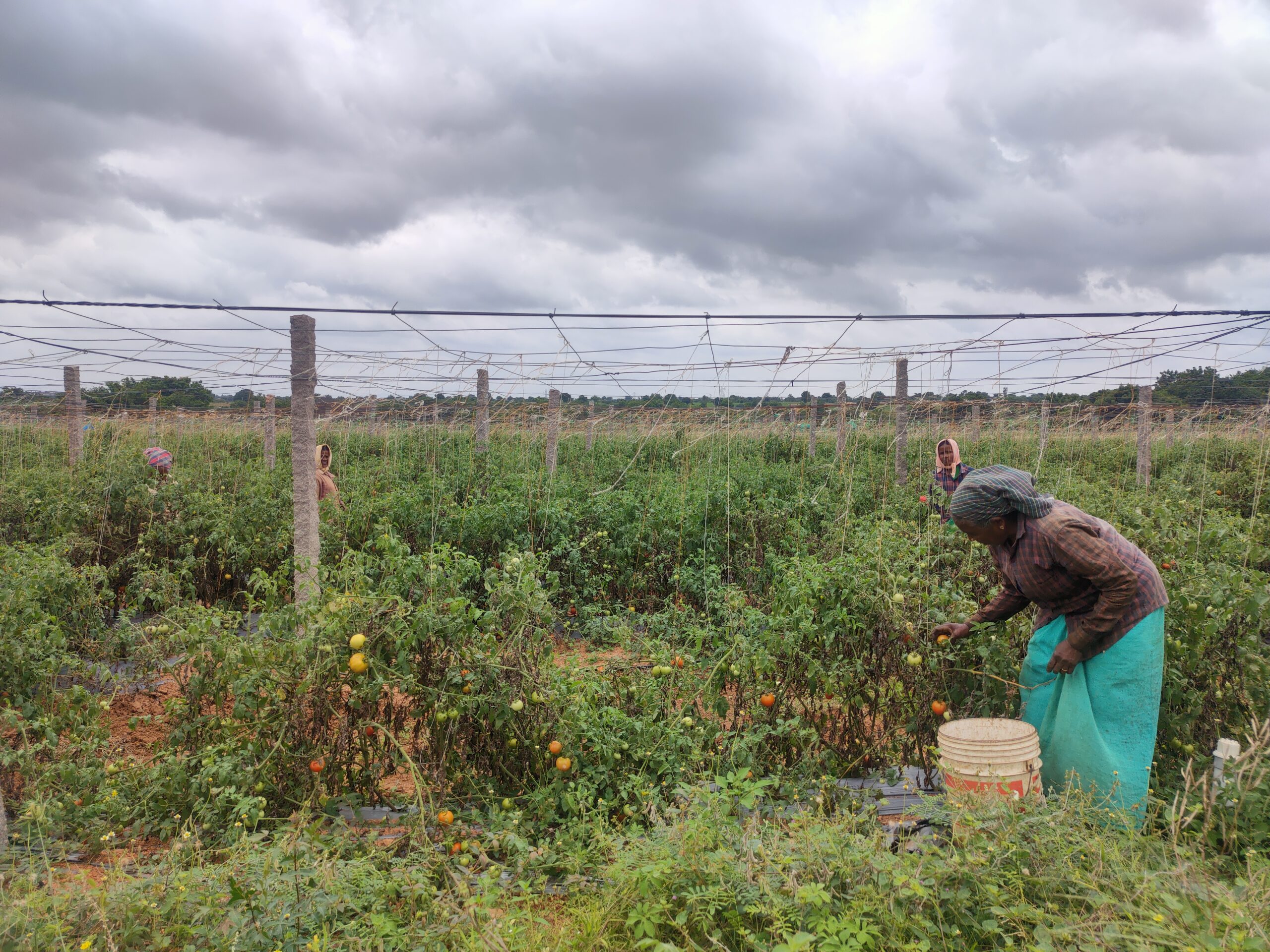
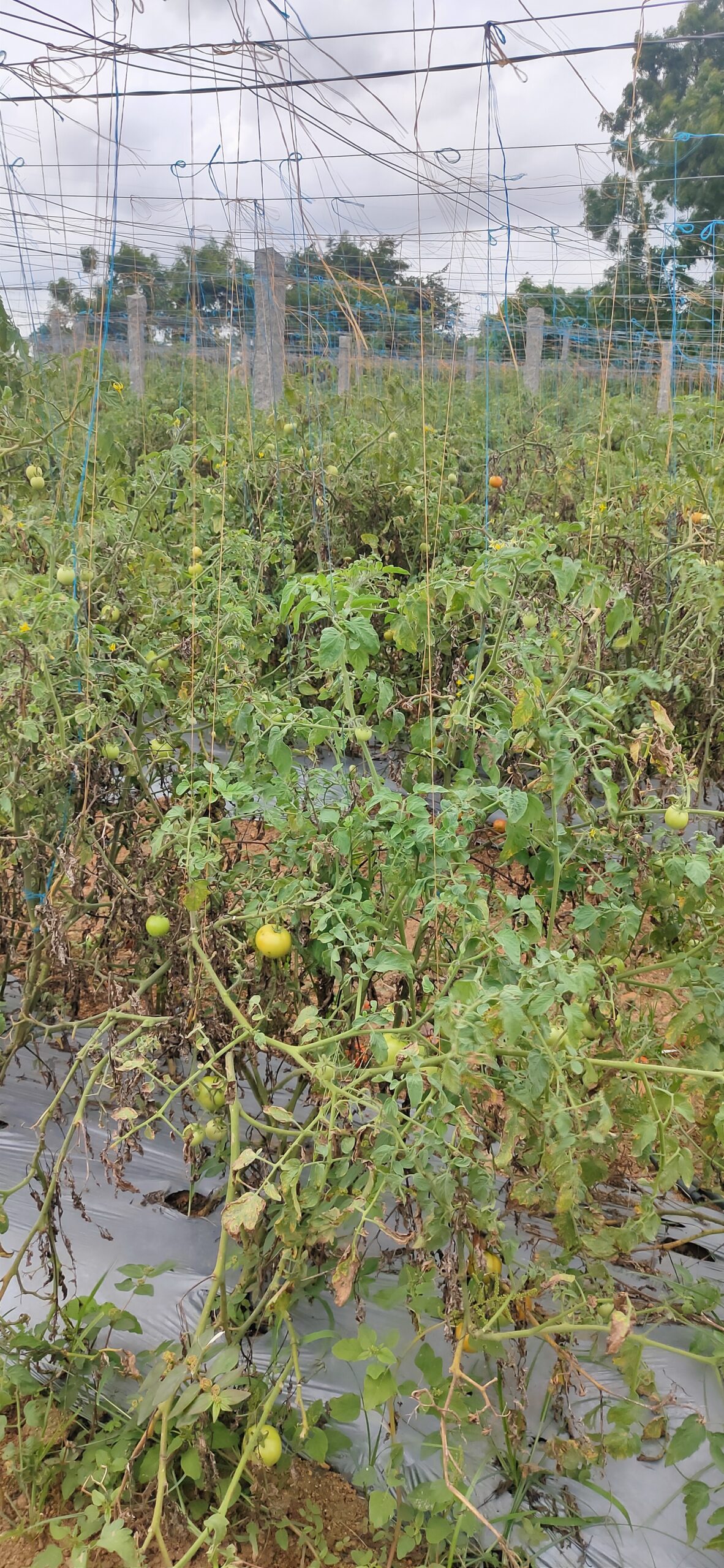
Cultivating tomatoes is labour intensive. Each plant needs to be held up by sticks and strings. Photo by Lakshmi Pranuti Choppakatla
We found that the absence of supply chain mechanisms (bolstered by cold chain infrastructure) and transparent procurement processes are significant drawbacks that are forcing farmers, who invest scarce water resources and high labour costs, to discard their harvest. The potential of food processing units to stem wastage also needs to be explored.
Unseasonal rains have impacted vegetable prices, with the cost of tomatoes crossing ₹90 per kilogram in some cities. To look at this development alongside piles of dumped produce is jarring. We need to urgently consider ways to, one, reduce post-harvest losses and, two, support farmers as well as other collectives working on the ground such as farmer producer organisations and civil society organisations to explore value-addition opportunities for the crops they are growing and selling.
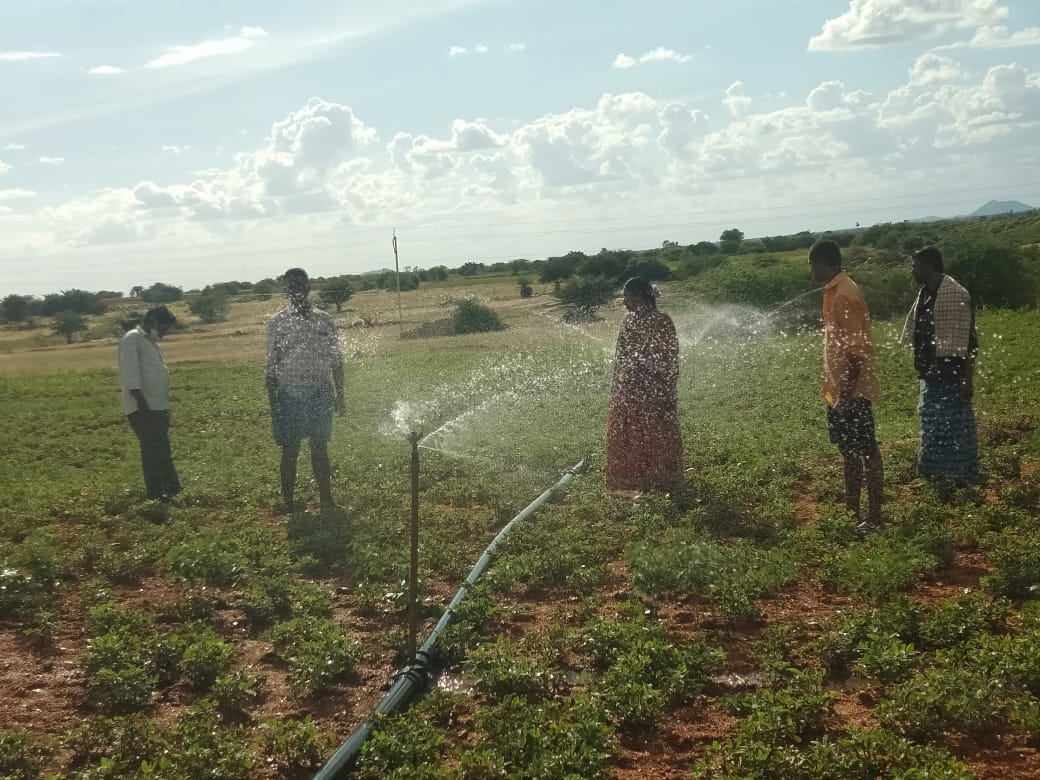
A network of canals carry excess water from the Srisailam reservoir to Anantapur and other parts of Rayalaseema. These canals feed local surface water bodies, which the farmers use for protective irrigation. When they need water, farmers with land close to these water bodies pump water directly from these ponds, which are then distributed through a system of sprinklers. To reiterate, this is a contingency plan resorted to only when crops have to be saved during periods of drought. Photo by Lakshmi Pranuti Choppakatla.
Credits
The authors began this work when they were with the Centre for Social and Environmental Innovation at the Ashoka Trust for Research in Ecology and the Environment (CSEI-ATREE). WELL Labs is now taking it forward in collaboration with ATREE.
Edited by Kaavya Kumar
If you would like to collaborate with us outside of this project or position, write to us. We would love to hear from you.
Follow us and stay updated about our work:


